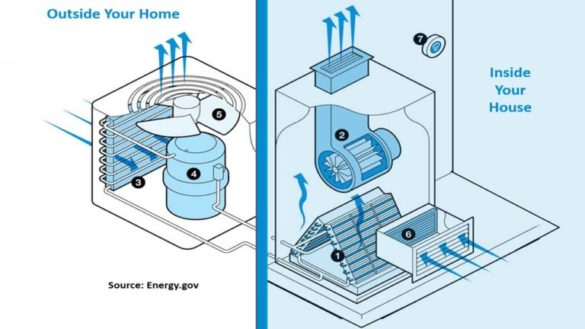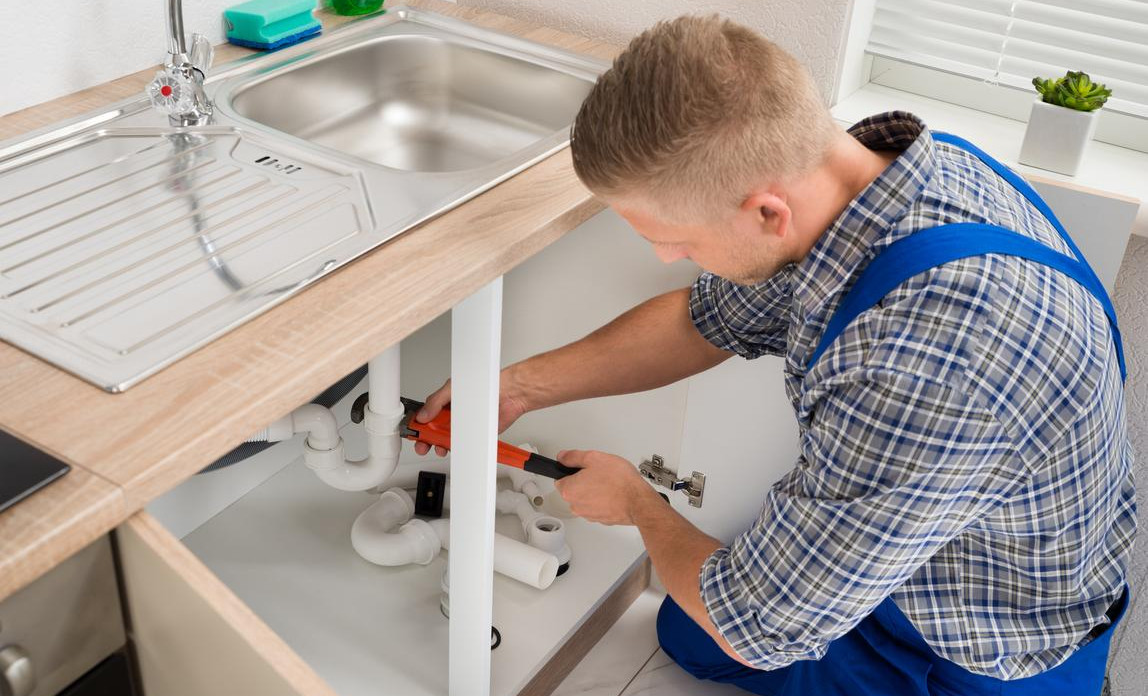The Basics to Your Home's Plumbing System Anatomy
The Basics to Your Home's Plumbing System Anatomy
Blog Article
This post following next in relation to Understanding Your Home's Plumbing Anatomy is pretty much fascinating. Don't skip it.

Recognizing how your home's pipes system functions is important for each homeowner. From providing clean water for alcohol consumption, cooking, and bathing to safely eliminating wastewater, a properly maintained pipes system is critical for your family's health and convenience. In this thorough guide, we'll explore the intricate network that composes your home's plumbing and offer ideas on upkeep, upgrades, and managing common concerns.
Intro
Your home's pipes system is more than just a network of pipelines; it's an intricate system that ensures you have access to clean water and efficient wastewater elimination. Understanding its components and just how they collaborate can assist you prevent pricey repair services and make sure everything runs efficiently.
Standard Parts of a Plumbing System
Pipelines and Tubing
At the heart of your pipes system are the pipelines and tubes that carry water throughout your home. These can be made of numerous materials such as copper, PVC, or PEX, each with its benefits in regards to sturdiness and cost-effectiveness.
Components: Sinks, Toilets, Showers, etc.
Fixtures like sinks, commodes, showers, and bathtubs are where water is made use of in your house. Understanding just how these fixtures connect to the pipes system assists in diagnosing issues and planning upgrades.
Shutoffs and Shut-off Points
Shutoffs manage the flow of water in your pipes system. Shut-off valves are vital during emergency situations or when you require to make repair services, allowing you to separate parts of the system without interfering with water flow to the entire house.
Water System System
Main Water Line
The primary water line connects your home to the local water or an exclusive well. It's where water enters your home and is dispersed to different fixtures.
Water Meter and Stress Regulator
The water meter procedures your water use, while a pressure regulatory authority guarantees that water flows at a risk-free stress throughout your home's pipes system, avoiding damages to pipelines and fixtures.
Cold Water vs. Hot Water Lines
Comprehending the difference in between cold water lines, which provide water straight from the main, and hot water lines, which carry warmed water from the water heater, helps in fixing and planning for upgrades.
Drainage System
Drain Pipes Pipes and Traps
Drain pipes lug wastewater away from sinks, showers, and commodes to the sewer or septic system. Traps avoid drain gases from entering your home and additionally trap particles that might cause blockages.
Air flow Pipes
Ventilation pipelines permit air right into the water drainage system, preventing suction that could slow drainage and cause traps to empty. Appropriate ventilation is vital for preserving the stability of your plumbing system.
Value of Appropriate Drain
Making sure proper drainage avoids backups and water damage. Frequently cleaning drains and preserving catches can avoid costly repair services and prolong the life of your plumbing system.
Water Heating Unit
Types of Water Heaters
Hot water heater can be tankless or typical tank-style. Tankless heating units warm water as needed, while containers save heated water for instant usage.
Updating Your Pipes System
Factors for Updating
Upgrading to water-efficient components or changing old pipelines can boost water top quality, lower water costs, and raise the worth of your home.
Modern Plumbing Technologies and Their Advantages
Check out innovations like smart leakage detectors, water-saving commodes, and energy-efficient water heaters that can save cash and reduce ecological effect.
Cost Factors To Consider and ROI
Determine the upfront prices versus long-lasting cost savings when taking into consideration plumbing upgrades. Many upgrades spend for themselves with reduced energy expenses and less repair services.
Exactly How Water Heaters Link to the Plumbing System
Understanding just how hot water heater link to both the cold water supply and hot water distribution lines helps in detecting issues like inadequate hot water or leaks.
Upkeep Tips for Water Heaters
Routinely purging your hot water heater to get rid of debris, inspecting the temperature setups, and evaluating for leakages can expand its life-span and enhance energy effectiveness.
Usual Pipes Issues
Leaks and Their Causes
Leaks can happen because of aging pipelines, loose fittings, or high water stress. Attending to leaks immediately avoids water damages and mold and mildew development.
Obstructions and Obstructions
Clogs in drains and bathrooms are commonly triggered by purging non-flushable products or an accumulation of grease and hair. Using drainpipe screens and being mindful of what decreases your drains can protect against obstructions.
Signs of Pipes Troubles to Watch For
Low tide stress, sluggish drains, foul odors, or abnormally high water costs are indicators of possible plumbing problems that should be addressed immediately.
Plumbing Maintenance Tips
Normal Assessments and Checks
Schedule yearly pipes evaluations to capture issues early. Seek indications of leakages, corrosion, or mineral build-up in faucets and showerheads.
Do It Yourself Upkeep Tasks
Basic tasks like cleaning tap aerators, checking for toilet leaks making use of color tablets, or shielding exposed pipes in chilly environments can avoid major plumbing problems.
When to Call an Expert Plumbing
Know when a pipes problem needs professional know-how. Trying complex repair work without appropriate understanding can lead to more damage and greater repair expenses.
Tips for Lowering Water Usage
Easy routines like repairing leaks immediately, taking much shorter showers, and running complete lots of laundry and dishes can conserve water and lower your utility expenses.
Eco-Friendly Plumbing Options
Think about sustainable pipes products like bamboo for floor covering, which is durable and green, or recycled glass for kitchen counters.
Emergency situation Readiness
Actions to Take Throughout a Plumbing Emergency situation
Know where your shut-off shutoffs lie and just how to switch off the water supply in case of a ruptured pipeline or major leak.
Importance of Having Emergency Situation Get In Touches With Handy
Keep call details for regional plumbing technicians or emergency services conveniently offered for quick feedback throughout a plumbing crisis.
Ecological Effect and Preservation
Water-Saving Components and Home Appliances
Mounting low-flow taps, showerheads, and toilets can significantly lower water usage without sacrificing performance.
DIY Emergency Situation Fixes (When Suitable).
Momentary fixes like making use of air duct tape to patch a dripping pipe or putting a bucket under a leaking faucet can minimize damages until a specialist plumbing technician gets here.
Verdict.
Comprehending the composition of your home's plumbing system empowers you to maintain it effectively, conserving money and time on repairs. By following regular upkeep regimens and staying informed concerning modern-day plumbing technologies, you can guarantee your pipes system operates efficiently for several years to find.
Understanding Your Home Plumbing System: A Comprehensive Guide
Plumbing System: The Lifeline of Your Home
At its core, the plumbing system is designed to perform two primary functions: bring fresh water into your home and remove wastewater. The system is a network of pipes, fixtures, and other components that transport water and sewage. Residential plumbing systems include potable water supply lines, drain-waste-vent (DWV) systems, and various plumbing fixtures that make water use in daily tasks possible.
Key Components:
Water Supply: This part of your plumbing system brings municipal water into your home, passing through the main water supply line. It s responsible for supplying all water needs, from drinking to bathing.
Drainage System: It carries waste and water away from your home to the sewer or septic system. This system includes all the piping within your home that leads to external sewage or septic systems.
Vent System: An essential yet often overlooked component, the vent system allows sewer gases to escape and lets air into the drainpipes, ensuring water and waste move correctly through the system.
Fixture: More Than Just Taps and Toilets
Plumbing fixtures are the most interactive parts of the plumbing system, including faucets, showers, toilets, and sinks. Each fixture is connected to the plumbing system and plays a role in either the delivery of freshwater or the disposal of waste and wastewater.
Types of Fixtures:
Faucets and Sinks: Used for washing hands, dishes, and other daily water needs. Toilets: Dispose of human waste through the sewage system. Bathtubs and Showers: Provide bathing facilities, requiring both hot and cold water supply. Water Supply: The Source of Life
The water supply system is a critical component, ensuring that potable water is available throughout your home for various uses, including drinking, cooking, and cleaning. This system consists of pipes that distribute water to different parts of the house, controlled by valves to regulate the water flow.
Types of Plumbing: Materials and Methods
Various types of plumbing systems and materials are used in residential settings, each with its advantages and applications. From copper and PVC pipes for water supply to cast iron and ABS for drainage, the choice of materials can impact the longevity and efficiency of your plumbing system.
https://intownplumbingtx.com/articles/home-plumbing-system-guide/

Do you enjoy more info about The Inner Workings of Your Home's Plumbing? Create a review down below. We would be pleased to find out your opinions about this blog posting. We are looking forward that you visit us again later on. Loved our write-up? Please share it. Help others find it. Thanks so much for taking the time to read it.
Apply Now Report this page